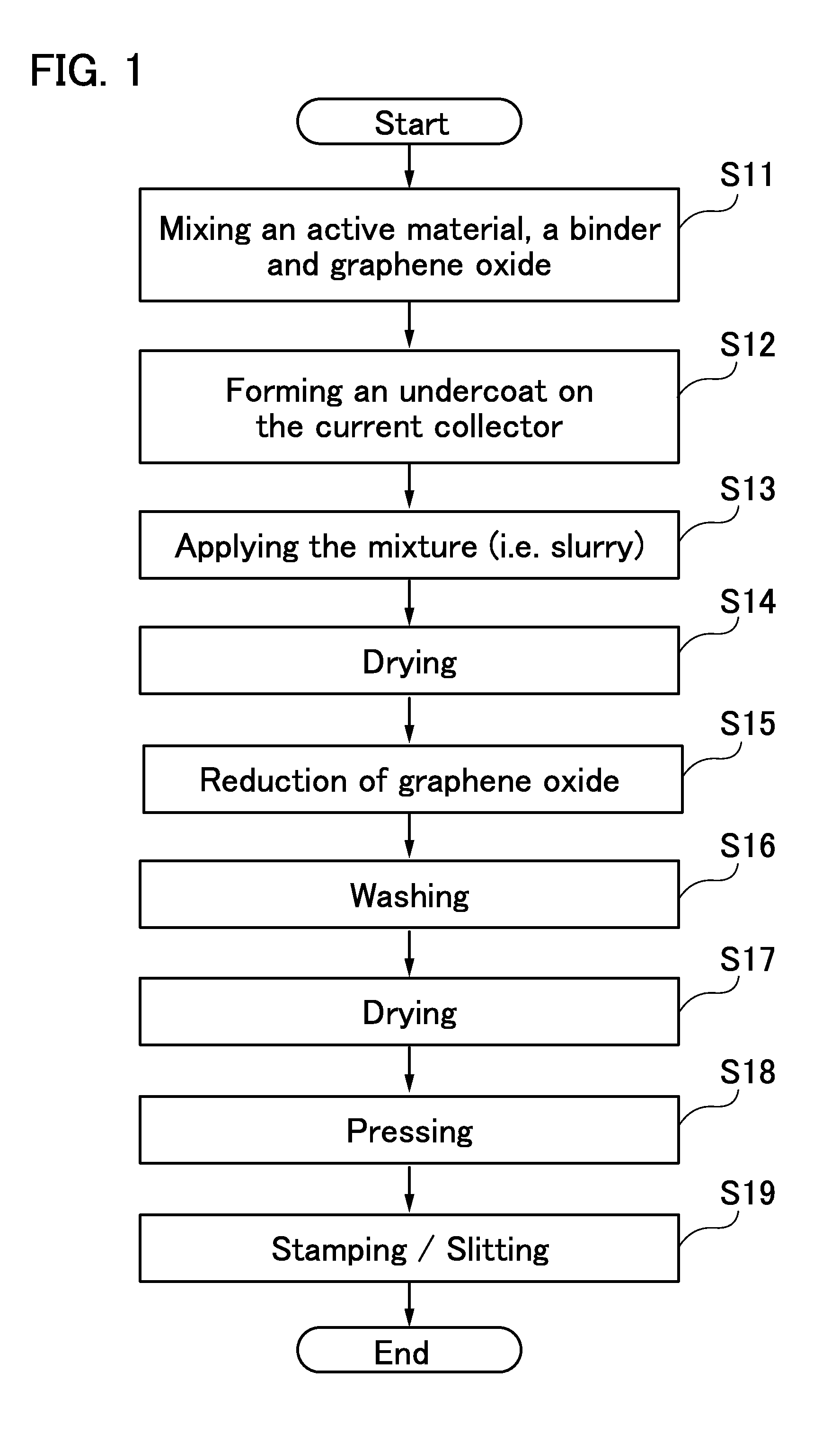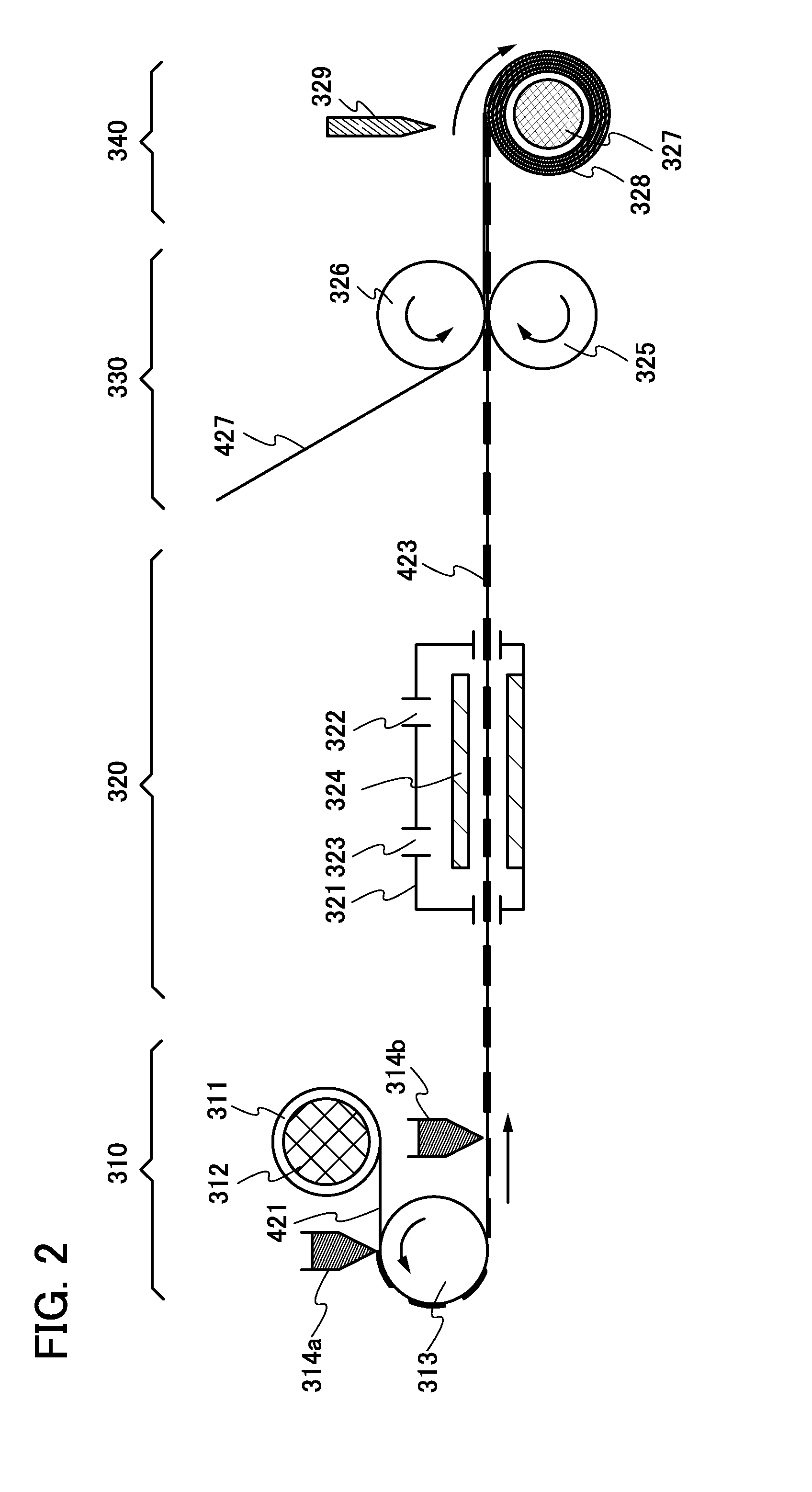Method for manufacturing electrode for storage battery
a technology for storage batteries and manufacturing methods, which is applied in the manufacture of batteries, cell components, final products, etc., can solve the problems of reducing the potential or reducing the material in the electrode, and reducing the discharge capacity of the battery, so as to achieve high density and high capacity
- Summary
- Abstract
- Description
- Claims
- Application Information
AI Technical Summary
Benefits of technology
Problems solved by technology
Method used
Image
Examples
embodiment 1
[0039]In this embodiment, a method for forming an electrode for a storage battery of one embodiment of the present invention will be described with reference to FIG. 1.
[0040]First, a description will be given of the significance of forming graphene in an electrode for a storage battery by reducing graphene oxide. Then, a method for forming an electrode for a storage battery using graphene oxide will be described.
[0041]An electrode for a storage battery of one embodiment of the present invention includes graphene as a conductive additive. However, in the case where an electrode for a storage battery is formed in such a manner that graphene or graphene formed by reducing graphene oxide in advance (reduced graphene oxide; RGO) are mixed with an active material and a binder, graphene flakes or RGO flakes aggregate in the electrode because of its low dispersibility and thus it is difficult to achieve favorable battery characteristics.
[0042]On the other hand, in the case of using graphene...
embodiment 2
[0088]In this embodiment, the case of employing the method for forming an electrode for a storage battery that is described in Embodiment 1 for mass production will be described with reference to FIG. 2 and FIGS. 3A to 3C.
[0089]It is preferable to successively perform steps to complete a storage battery electrode from a step of applying a slurry to a substrate, with the use of a fabricating apparatus such as a roll-to-roll apparatus, in the method for forming a storage battery electrode in Embodiment 1. In the case of successively perform the steps with the use of a fabricating apparatus such as a roll-to-roll apparatus, however, a change in the concentration of a reducing solution with time in a reduction step of graphene oxide causes variation in the reduction amount of graphene oxide in storage battery electrodes, resulting in uneven characteristics of the storage battery electrodes.
[0090]Preventing a change in the concentration of a reducing solution requires a control mechanism...
embodiment 3
[0127]In this embodiment, a battery cell and a fabricating method thereof will be described with reference to FIGS. 6A to 6C, FIGS. 7A to 7C, and FIGS. 8A to 8C.
[0128]First, the structure of a battery cell will be described. The storage battery electrode of one embodiment of the present invention can be used as either or both of a positive electrode and a negative electrode.
[0129]First, a positive electrode that can be used for a battery cell will be described with reference to FIGS. 6A to 6C.
[0130]FIG. 6A is a perspective view of a positive electrode 400, and FIG. 6B is a cross-sectional view of the positive electrode 400. The positive electrode 400 includes a positive electrode current collector 401 and a positive electrode active material layer 402 formed over the positive electrode current collector 401 by a coating method, a CVD method, a sputtering method, or the like, for example. Further, an undercoat 403 is provided between the positive electrode current collector 401 and t...
PUM
| Property | Measurement | Unit |
|---|---|---|
| Boiling point | aaaaa | aaaaa |
Abstract
Description
Claims
Application Information
 Login to View More
Login to View More - R&D
- Intellectual Property
- Life Sciences
- Materials
- Tech Scout
- Unparalleled Data Quality
- Higher Quality Content
- 60% Fewer Hallucinations
Browse by: Latest US Patents, China's latest patents, Technical Efficacy Thesaurus, Application Domain, Technology Topic, Popular Technical Reports.
© 2025 PatSnap. All rights reserved.Legal|Privacy policy|Modern Slavery Act Transparency Statement|Sitemap|About US| Contact US: help@patsnap.com



